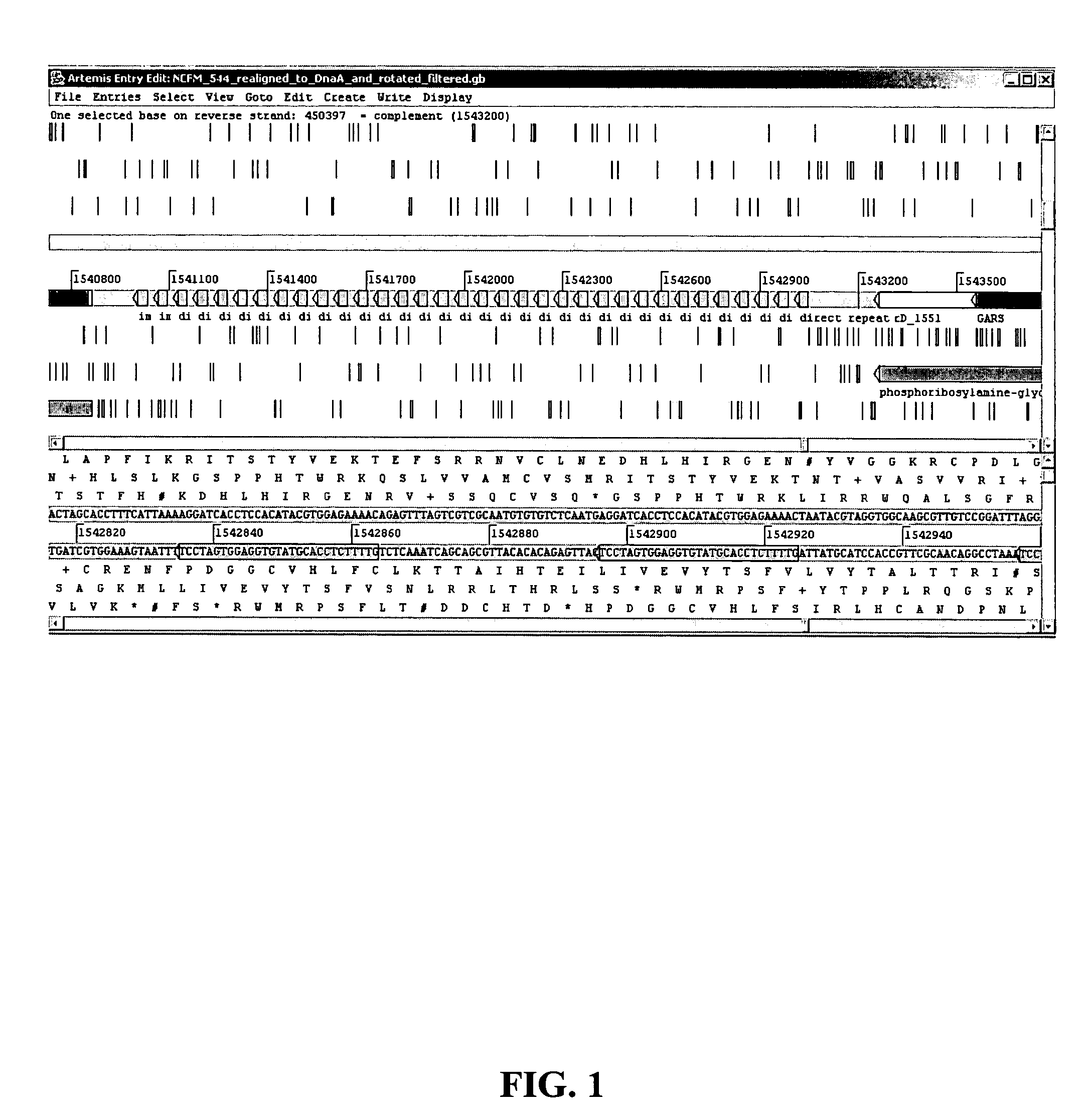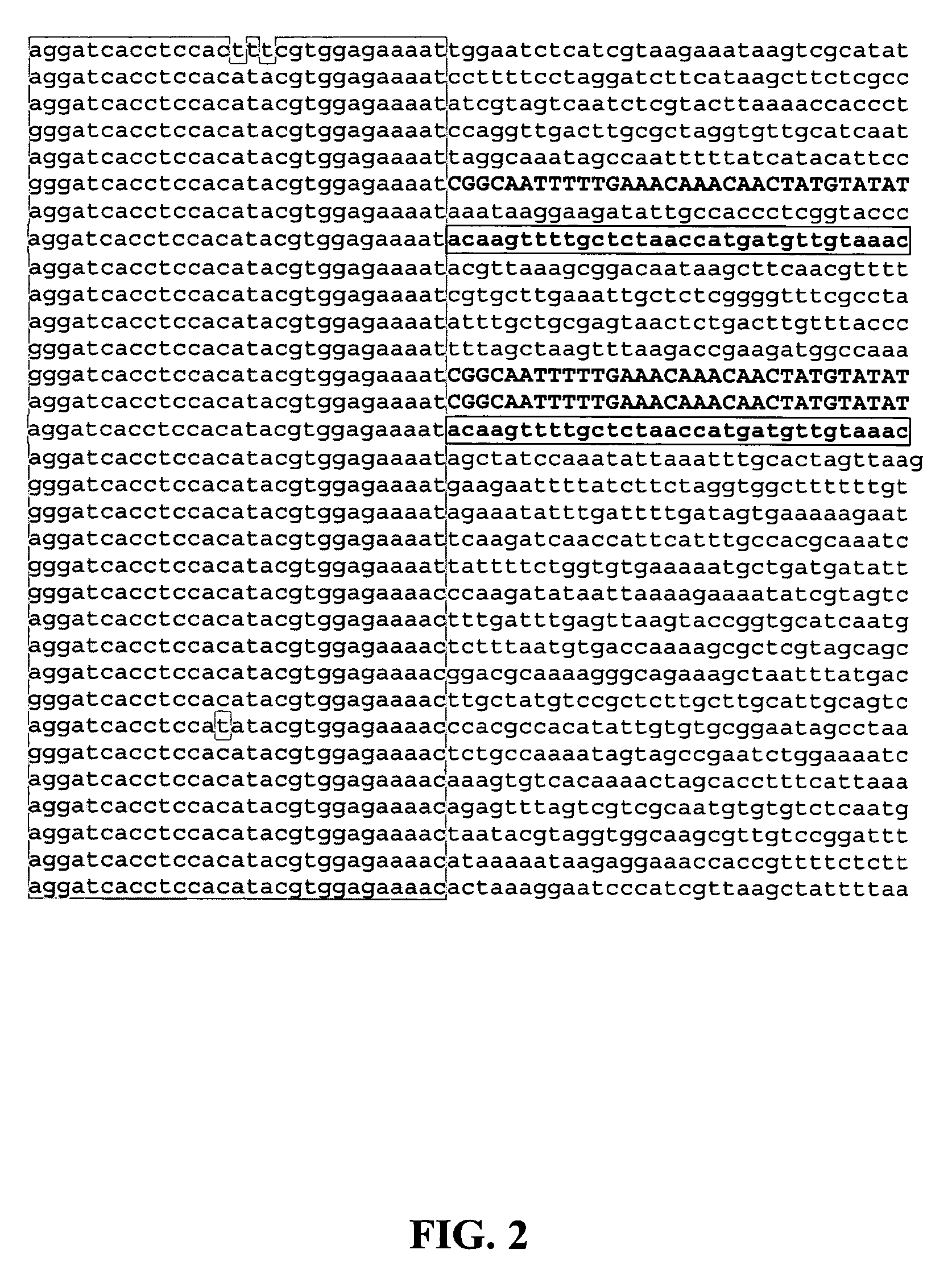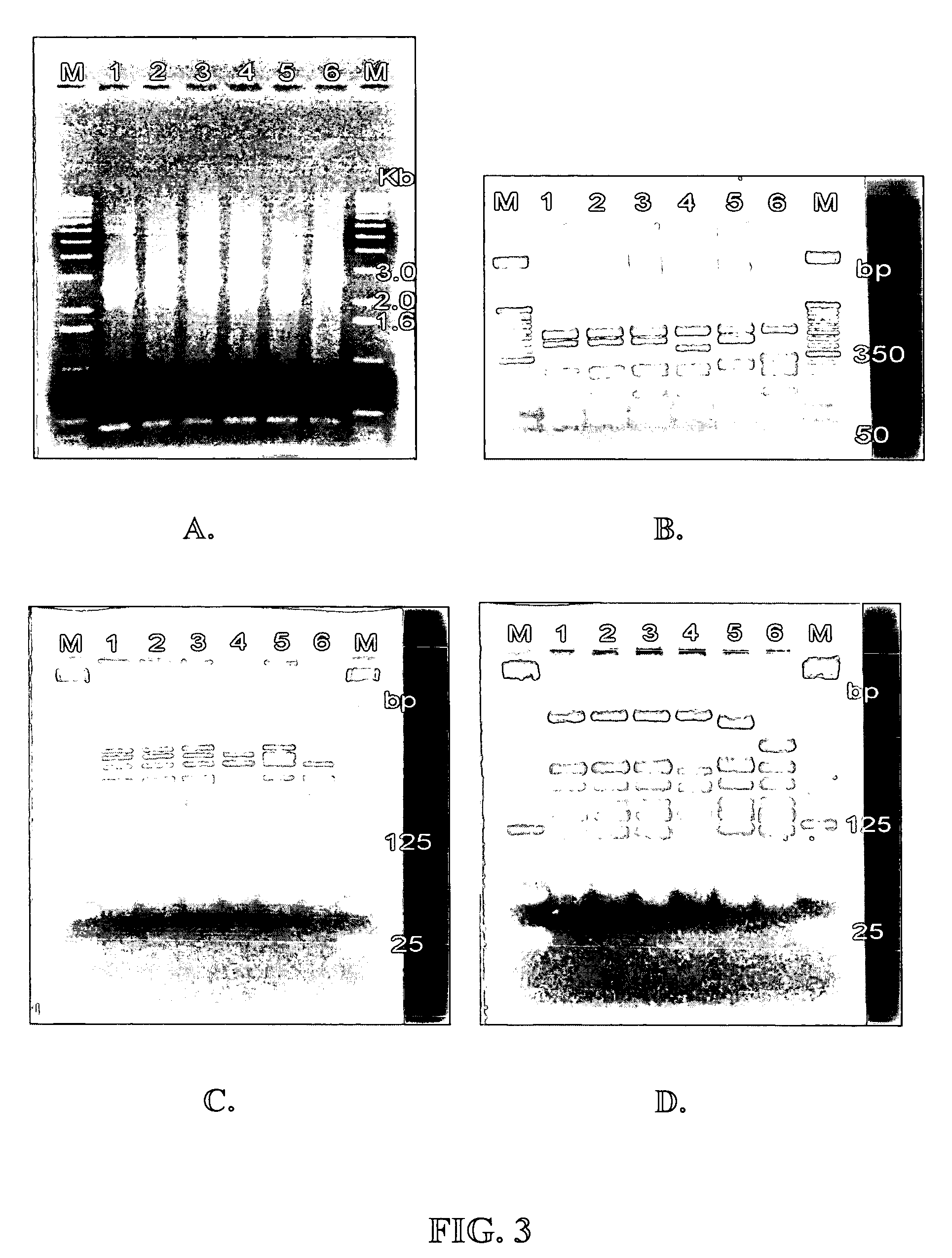Detection and typing of bacterial strains
- Summary
- Abstract
- Description
- Claims
- Application Information
AI Technical Summary
Benefits of technology
Problems solved by technology
Method used
Image
Examples
example 1
DNA Analysis
[0072]The genomic DNA sequence from Lactobacillus acidophilus NCFM® was analyzed for repetitive DNA by a “repeat and match analysis” using Applied Maths' Kodon software package. One intergenic region between DNA polymerase I (polA) (ORF 1550) and a putative phosphoribosylamine-glycine ligase (purD) (ORF 1551) was identified as having features characteristic of a CRISPR locus. This region is approximately 2.4 kb long and contains 32 nearly perfect repeats of 29 base pairs separated by 32 base pair spacers (see FIGS. 1 and 2).
[0073]A number of features of the CRISPR region can be seen in FIG. 2. The 29 base pair repeats are highlighted. The first nucleotide of the repeat is either an A or a G. The last nucleotide of the repeat changes from a T to a C at repeat number 21. An imperfect inverted repeat is indicated by an underline on the last repeat. The first repeat contains two A→T base substitutions. The 26th repeat contains one C→T base substitution. Two sequences are rep...
example 2
PCR of Intergenic Region
[0074]Primers were designed to amplify the entire intergenic region between polA and purD (expected product size=2582 base pairs). The primers were as follows:
[0075]
1550_F-5′ GCA TTA GTG TGC AAC CCA TCT GG 3′(SEQ ID NO: 49)1551_R-5′ GAT CTG CTG GAT TGC TTC TAC CG 3′(SEQ ID NO: 50)
[0076]A PCR reaction mix was set up for each reaction (25.0 μl of AccuPrime SuperMix II (2× conc.); 1.0 μl of each primer (20 μM); 1 μl of template (300 ng / μl); H2O to 50.0 μl). The reaction conditions were as follows: 1 cycle at 95° C. for 5 minutes; 40 cycles with a first step at 95° C. for 30 seconds, a second step at 54° C. for 30 seconds, and a third step at 68° C. for 3 minutes; 1 cycle at 68° C. for 7 minutes.
[0077]This PCR was performed on sixteen L. acidophilus strains. All L. acidophilus strains that had previously been shown to be identical to L. acidophilus NCFM® by other means (i.e., PFGE, Microarrays, 16S sequencing, etc.) generated the same size PCR amplicon. Three str...
example 3
PCR Amplification Method is Specific for Lactobacillus acidophilus Detection
[0081]PCR was performed on 23 bacterial samples as described in Example 2. PCR amplification of all L. acidophilus strains tested resulted in a PCR amplicon, whereas all other species tested did not (see FIG. 4). The species of all tested strains were confirmed using 16S sequencing. Therefore, this method is specific for L. acidophilus.
PUM
| Property | Measurement | Unit |
|---|---|---|
| temperature | aaaaa | aaaaa |
| temperature | aaaaa | aaaaa |
| pH | aaaaa | aaaaa |
Abstract
Description
Claims
Application Information
 Login to View More
Login to View More - R&D
- Intellectual Property
- Life Sciences
- Materials
- Tech Scout
- Unparalleled Data Quality
- Higher Quality Content
- 60% Fewer Hallucinations
Browse by: Latest US Patents, China's latest patents, Technical Efficacy Thesaurus, Application Domain, Technology Topic, Popular Technical Reports.
© 2025 PatSnap. All rights reserved.Legal|Privacy policy|Modern Slavery Act Transparency Statement|Sitemap|About US| Contact US: help@patsnap.com



